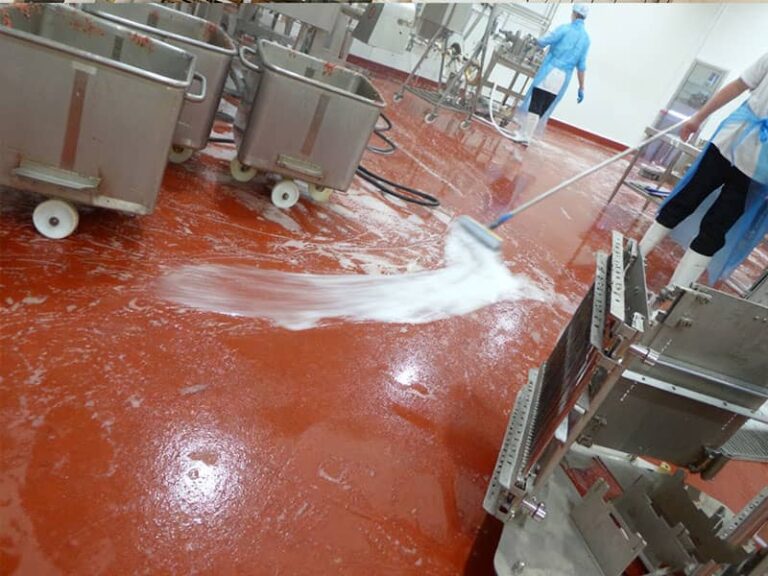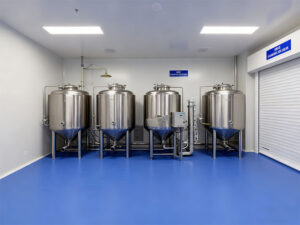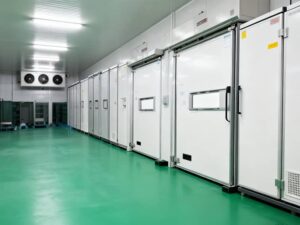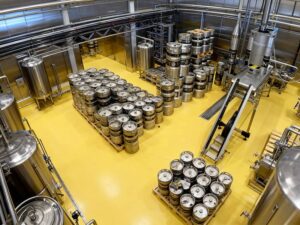Polyurethane flooring performs exceptionally well in chemical plants, offering superior chemical resistance, durability, and safety features that meet the demanding conditions of industrial environments. This specialized flooring solution withstands exposure to aggressive chemicals, heavy impacts, and extreme temperatures while maintaining structural integrity and hygienic properties. Its unique composition and performance characteristics make it an ideal choice for facilities where chemical spills, thermal shocks, and heavy traffic are daily challenges.
Polyurethane flooring’s effectiveness in chemical plants stems from its innovative material science, which combines resilience with chemical inertness. Unlike conventional flooring options, polyurethane systems maintain their performance under prolonged exposure to corrosive substances, temperature fluctuations, and mechanical stress. This article examines the key performance attributes, compares polyurethane with alternative flooring types, presents real-world case studies, and provides technical specifications to demonstrate why it’s the preferred solution for chemical processing environments.
1. Chemical Resistance: The Primary Performance Metric in Chemical Plants
Chemical resistance represents polyurethane flooring’s most valuable characteristic in chemical plant applications. The material’s molecular structure and dense, non-porous surface prevent chemical penetration that would degrade lesser flooring materials.
Polyurethane flooring demonstrates proven resistance to a comprehensive range of industrial chemicals encountered in chemical processing facilities. This includes:
- Acids: Both inorganic (sulfuric, hydrochloric, nitric, phosphoric) and organic varieties
- Alkalis: Sodium hydroxide, potassium hydroxide, and ammonium hydroxide solutions
- Solvents: Aliphatic and aromatic hydrocarbons, chlorinated solvents, ketones
- Oils and Greases: Hydraulic fluids, lubricants, cutting fluids, and petroleum derivatives
- Sanitizers and Cleaners: Chlorine-based disinfectants, peroxide solutions, quaternary ammonium compounds
The impermeable nature of polyurethane prevents chemical absorption, thereby eliminating subsurface damage, blistering, and degradation that compromise structural integrity. Unlike porous materials that absorb chemicals and suffer progressive deterioration, polyurethane creates an impervious barrier that maintains its properties throughout its service life. Specific formulations like KAIDA® are explicitly engineered to resist “many industries used in a variety of corrosive chemicals” and can withstand “organic & inorganic acids and alkalis” used in industrial cleaning and disinfecting procedures.
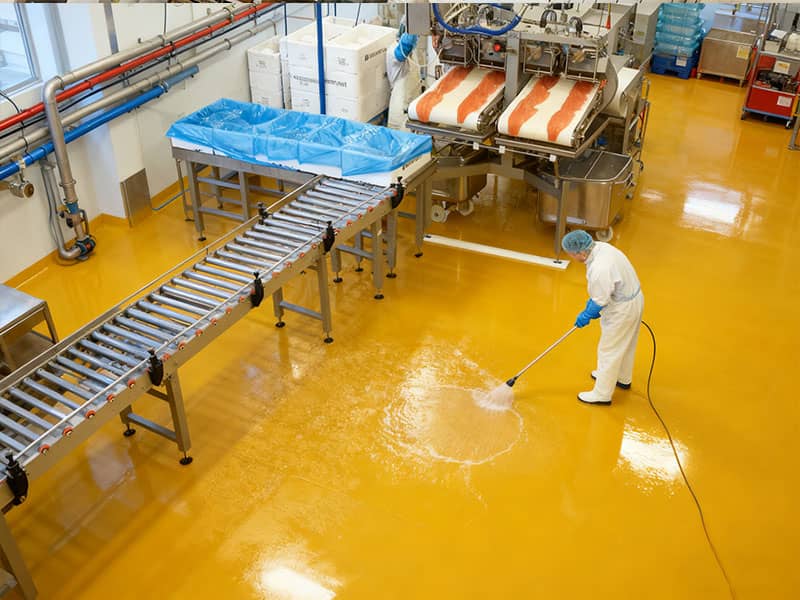
2. Mechanical and Physical Properties: Withstanding Industrial Demands
Beyond chemical exposure, chemical plant flooring must endure substantial physical stresses from equipment, traffic, and operational activities. Polyurethane flooring delivers exceptional mechanical performance across multiple dimensions.
2.1. Durability and Structural Integrity
The structural resilience of polyurethane flooring manifests in several critical performance areas:
- Устойчивость к ударам: Polyurethane systems exhibit extraordinary tolerance to mechanical impact from dropped tools, equipment parts, and falling objects. Products like KAIDA® have demonstrated the ability to withstand “the strongest impact, such as steel barrels falling from the production line or tools and channel covers falling during maintenance” without sustaining damage. This non-brittle characteristic prevents cracking and surface spalling that would create maintenance issues and contamination risks.
- Устойчивость к истиранию: The combination of hardness and elasticity enables polyurethane flooring to resist wear from foot traffic, wheeled equipment, and dragged objects. This abrasion resistance maintains surface integrity even in high-traffic areas, extending service life significantly beyond alternative materials.
- Прочность на сжатие: With typical compressive strength values exceeding 45 MPa, polyurethane flooring distributes concentrated loads effectively, preventing permanent deformation from heavy equipment, storage racks, and processing machinery.
2.2. Thermal Performance
Chemical processes often involve temperature extremes that challenge conventional flooring materials. Polyurethane flooring maintains its properties across a remarkably wide temperature range:
Table: Thermal Performance Characteristics of Polyurethane Flooring
| Temperature Condition | Performance Capability | Application Example |
|---|---|---|
| Continuous High Temperature | Up to 120°C continuously | Areas near drying ovens, heat exchangers |
| Peak Temperature Exposure | Withstands 150°C intermittently | Chemical spill scenarios with hot liquids |
| Low Temperature Service | Maintains properties down to -40°C | Cold storage, cryogenic processing areas |
| Устойчивость к тепловому удару | Withstands rapid temperature changes | Areas transitioning between hot and cold processes |
This thermal stability prevents the softening, melting, cracking, and embrittlement that affect other materials when exposed to temperature variations. Specifically, KAIDA® products “can be used in a wide temperature range from -40°C to +130°C, and some specifications can occasionally withstand high temperature environments up to +150°C”. A 9mm thick system can “withstand daily boiling water discharge”, demonstrating exceptional thermal resistance.
3. Safety and Hygiene Attributes: Protecting People and Processes
In chemical plants where safety and contamination control are paramount, polyurethane flooring provides critical protective functionalities that safeguard personnel, processes, and products.
3.1. Enhanced Safety Features
The safety benefits of polyurethane flooring directly address chemical plant requirements:
- Устойчивость к скольжению: Polyurethane flooring can be formulated with “various surface roughness from smooth to deep texture”, allowing specification of appropriate slip resistance for different areas. This customization capability enables plant designers to optimize safety in wet processing zones, chemical handling areas, and locations with frequent spillage.
- Гигиеническая поверхность: The non-porous, seamless nature of polyurethane flooring prevents microbial colonization and facilitates effective cleaning. This “dense and impervious” quality eliminates grout lines, cracks, and pores where bacteria, mold, and contaminants could accumulate, supporting stringent hygiene protocols.
- Chemical Protection: By containing chemical spills and facilitating rapid cleanup, polyurethane flooring reduces chemical exposure risks to personnel and prevents slip hazards.
3.2. Cleanability and Maintenance
The ease of cleaning polyurethane surfaces significantly impacts operational efficiency and safety in chemical plants:
- Steam Cleanability: High-performance systems like KAIDA® are “fully steam cleanable” at temperatures up to 120°C, enabling rigorous sanitation without surface degradation.
- Chemical Compatibility: The same chemical resistance that protects the flooring from process chemicals also ensures compatibility with industrial cleaning agents and disinfectants.
- Устойчивость к пятнам: The non-absorbent surface prevents discoloration from chemical spills, maintaining aesthetic appearance and enabling visual detection of new spills.

4. Comparative Performance: Polyurethane Versus Alternative Flooring Materials
Understanding polyurethane’s advantages requires comparison with other common industrial flooring options. The following analysis highlights why polyurethane typically outperforms alternatives in chemical plant applications.
Table: Chemical Plant Flooring Material Comparison
| Тип напольного покрытия | Химическая стойкость | Устойчивость к ударам | Thermal Stability | Время установки | Lifecycle Cost |
|---|---|---|---|---|---|
| Полиуретан | Excellent (acids, alkalis, solvents) | Превосходно | Excellent (-40°C to 150°C) | Rapid cure (hours) | Низкий |
| Эпоксидная смола | Good to Excellent (varies by type) | Good (can be brittle) | Moderate (thermal cycling issues) | Moderate cure (days) | Умеренный |
| Бетон | Poor (requires coatings) | Good (but can spall) | Хорошо | Extended cure (weeks) | High (maintenance) |
| Vinyl | Moderate (solvent vulnerable) | Умеренный | Poor (limited range) | Rapid installation | Moderate to High |
The comparative data reveals polyurethane’s comprehensive performance advantages, particularly regarding chemical resistance, thermal stability, and installation efficiency. Unlike epoxy, which can become brittle and crack under thermal cycling, polyurethane maintains flexural strength across extreme temperature ranges. Compared to concrete, which is porous and requires protective coatings, polyurethane provides inherent resistance without additional barriers.
5. Installation and Lifecycle Considerations: Operational Advantages
The practical implementation and long-term performance of polyurethane flooring deliver significant operational benefits in active chemical plants.
5.1. Installation Efficiency
Polyurethane flooring systems offer notable installation advantages:
- Rapid Cure Times: Fast-curing formulations can achieve “pedestrian traffic in 8 hours; vehicular traffic in 24 hours”. Some specialized products can be “installed and cured within a 12-hour application window”, minimizing production downtime during installation or renovation.
- Application Flexibility: Polyurethane can be installed “without stopping production” in operational facilities, an crucial consideration for continuous process industries. The material can be applied to “7-day old cast concrete”, accelerating project timelines compared to alternatives requiring fully cured substrates.
- Moisture Tolerance: Unlike many flooring materials, polyurethane systems can be installed “without a special primer on fresh concrete poured for seven days”, providing significant scheduling advantages and reducing moisture-related installation failures.
5.2. Lifecycle Performance
The long-term value of polyurethane flooring emerges through its durability and minimal maintenance requirements:
- Extended Service Life: Documented cases show polyurethane systems “still in good condition after more than 30 years of extensive exposure to harsh environments”. This exceptional longevity provides significant lifecycle cost advantages despite potentially higher initial investment.
- Minimal Maintenance: The inherent durability and chemical resistance reduce maintenance frequency and complexity. The “years of maintenance-free service” decrease operational disruptions and lifetime costs.
- Sustainable Performance: The long service interval and durability contribute to sustainability by reducing material replacement frequency and associated resource consumption.
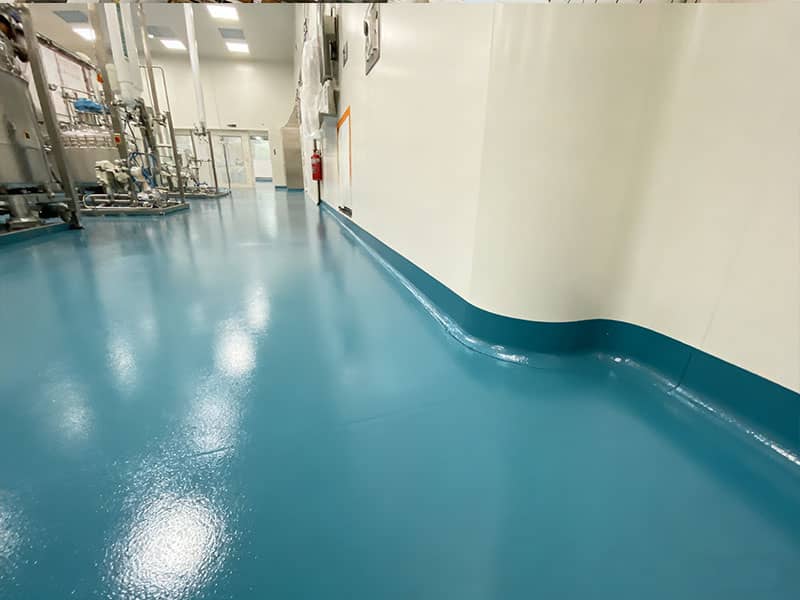
6. Application Examples and Case Studies: Proven Chemical Plant Performance
Documented implementations validate polyurethane flooring’s performance in demanding chemical environments:
- Chemical Processing Facilities: Polyurethane systems routinely handle “aggressive chemicals” in chemical manufacturing plants, resisting complex chemical exposures while withstanding physical abuse from equipment and traffic.
- Pharmaceutical Production: The “clean and hygienic” properties combined with chemical resistance make polyurethane ideal for pharmaceutical manufacturing, where stringent cleanliness standards coincide with chemical exposure.
- Food and Beverage Processing: While not chemical plants per se, these facilities use aggressive cleaning chemicals and sanitizers at elevated temperatures, creating similar challenges. The successful performance of KAIDA® in these environments, withstanding “organic & inorganic acids and alkalis used in regular cleaning and disinfection procedures”, demonstrates capability directly transferable to chemical processing.
- Maelor Foods Installation: A comprehensive installation of “4000m² BASF Ucrete UD200SR heavy duty polyurethane screed” demonstrated exceptional resistance to “aggressive chemicals, heavy impact and temperatures of up to 150°C” in a demanding processing environment, showcasing the material’s capabilities under real-world conditions.
7. Technical Specifications and Standards Compliance
Polyurethane flooring systems for chemical plants conform to rigorous international standards and possess specific technical attributes that validate their performance claims:
- ASTM Standards: ASTM F3403-23 provides specification for “heterogeneous polyurethane sheet flooring”, establishing performance benchmarks for materials used in industrial applications.
- Сертификаты: Leading polyurethane systems carry certifications relevant to industrial applications, including compliance with “Eurofins Indoor Air Comfort Gold label” for low emissions, and certifications for use in “food facilities operating HACCP quality systems”.
- Technical Performance: Standard polyurethane flooring systems exhibit key performance metrics including:
- Abrasion resistance: ≤0.06g (750g/500r)
- Compressive strength: ≥45 MPa
- Chemical resistance: Maintains integrity after prolonged exposure to acids, alkalis, and solvents
- Impact resistance: Withstands significant mechanical impact without damage
These technical specifications provide quantifiable evidence of polyurethane flooring’s suitability for chemical plant environments where performance verification is essential.
Conclusion: The Definitive Flooring Solution for Chemical Plants
Polyurethane flooring represents the optimal choice for chemical plant applications based on its demonstrated chemical resistance, mechanical durability, thermal stability, and safety enhancements. The material’s proven performance in demanding environments, combined with installation efficiencies and long service life, delivers unmatched value for chemical processing facilities. As industrial requirements evolve toward more stringent safety, environmental, and operational standards, polyurethane flooring continues to demonstrate its capability to meet and exceed these challenges, making it the preferred specification for engineers, designers, and facility managers responsible for chemical plant infrastructure.
KAIDA PAINT specializes in advanced polyurethane flooring systems engineered specifically for demanding industrial environments like chemical processing plants. Our technical expertise in formulating high-performance flooring solutions ensures exceptional chemical resistance, durability, and safety compliance. With proven installations in various industrial sectors, KAIDA PAINT provides comprehensive flooring solutions from technical specification through professional installation. Our product development focus on solving unique chemical plant challenges distinguishes us as specialists rather than general suppliers. For detailed technical specifications, project references, or consultation on your specific chemical plant flooring requirements, contact our industrial flooring experts to discuss your project needs.
